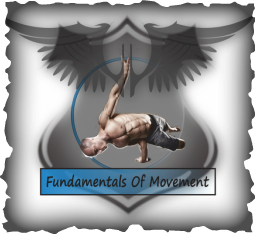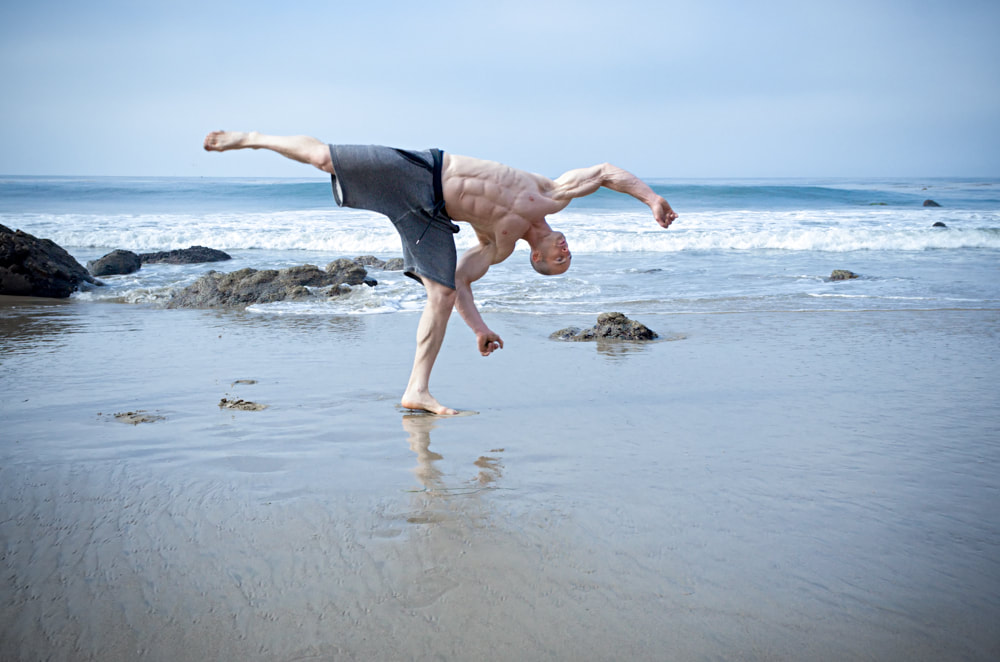This Article was first published by the 'Unconventional Athlete' Magazine, and can be seen here:
https://www.unconventionalathletes.com/4-ways-to-get-a-stronger-core-for-kicks/
Kicking is a diverse skill. On the one hand, it draws on physical conditioning traits such as
strength in particular alignments, and flexibility. On the other hand, there are many techniques and many different kicks.
On the technical side, there are many different martial arts to look at, each comprising different styles. Within each of these, kicks are used in many different ways. Sometimes it's to push, sometimes to sweep. There are low kicks, high kicks and more. But most kicks have a common mechanism at play: one limb pushes the floor, creating kinetic power that travels up into the hips and core, eventually expressing itself through the kicking leg like a whip.
Perfecting technique is the best way to produce greater force in kicks. That
said, while working to improve our abilities there is room to make use of any tools we can find. A conditioning plan can help us connect to weak areas in our alignment chains, and learn to activate muscles that we are not used to using.
This article will look at the conditioning aspect. In the big picture, a practitioner
should be aware of his endurance and speed. Being able to sustain a high intensity performance is essential for any fighting style, so high intensity endurance is a major component of general conditioning. Developing speed is another essential piece for kickers who want to create real abilities.
Looking at specific conditioning, there are many muscle groups and alignments to target in order to create the foundation for kicks. Paying attention to hips and legs is a given. The upper body is there for the lower body to work against; in most kicks, the legs work against the arms and shoulders through some kind of twisting motion, and that is where the core comes into play.
When the core is weak and unstable, the connection between the lower and upper body is
loose. That means that one body part can't work efficiently against the other, and the power of the kick is lost. In this situation, it is usually necessary to learn how to fire all the muscles that are supposed to engage in that chain. Once the core learns how to transmit force between the lower and upper body, then the focus becomes strengthening those muscles to create higher efficiency.
When training specifically for kicking, it is important to include drills that
mimic the actual action they are meant to fortify. The more similar the alignment is, the
better it will be for the end function.
Reading about kicking is a totally different alignment, so let's get into some exercises to bring these concepts into the body.
1. Here is a beginner friendly exercise to start, Floor Leg Raises:
https://www.unconventionalathletes.com/4-ways-to-get-a-stronger-core-for-kicks/
Kicking is a diverse skill. On the one hand, it draws on physical conditioning traits such as
strength in particular alignments, and flexibility. On the other hand, there are many techniques and many different kicks.
On the technical side, there are many different martial arts to look at, each comprising different styles. Within each of these, kicks are used in many different ways. Sometimes it's to push, sometimes to sweep. There are low kicks, high kicks and more. But most kicks have a common mechanism at play: one limb pushes the floor, creating kinetic power that travels up into the hips and core, eventually expressing itself through the kicking leg like a whip.
Perfecting technique is the best way to produce greater force in kicks. That
said, while working to improve our abilities there is room to make use of any tools we can find. A conditioning plan can help us connect to weak areas in our alignment chains, and learn to activate muscles that we are not used to using.
This article will look at the conditioning aspect. In the big picture, a practitioner
should be aware of his endurance and speed. Being able to sustain a high intensity performance is essential for any fighting style, so high intensity endurance is a major component of general conditioning. Developing speed is another essential piece for kickers who want to create real abilities.
Looking at specific conditioning, there are many muscle groups and alignments to target in order to create the foundation for kicks. Paying attention to hips and legs is a given. The upper body is there for the lower body to work against; in most kicks, the legs work against the arms and shoulders through some kind of twisting motion, and that is where the core comes into play.
When the core is weak and unstable, the connection between the lower and upper body is
loose. That means that one body part can't work efficiently against the other, and the power of the kick is lost. In this situation, it is usually necessary to learn how to fire all the muscles that are supposed to engage in that chain. Once the core learns how to transmit force between the lower and upper body, then the focus becomes strengthening those muscles to create higher efficiency.
When training specifically for kicking, it is important to include drills that
mimic the actual action they are meant to fortify. The more similar the alignment is, the
better it will be for the end function.
Reading about kicking is a totally different alignment, so let's get into some exercises to bring these concepts into the body.
1. Here is a beginner friendly exercise to start, Floor Leg Raises:
This is a great exercise for kicking, and most practitioners will have a pretty easy time getting into it. Many people experience soreness, accompanied by better kicking, very quickly while adapting to this drill.
I generally recommend 3-5 sets of 10-20 repetitions on a daily basis.
2. These Standing Leg Raises can be done in conjunction with the first exercise, or as a second step after training the Floor Leg Raises for a few weeks:
This drill is already much more specific to kicking. It is still easy, and will also
develop mobility, technique and coordination.
3-5 sets of 10 repetitions each side on a daily basis should be good.
3. The third exercise will be Hanging Leg raises:
This one is more difficult and will have a longer adaptation curve. It is a great
exercise for strengthening the core, and its benefits go way beyond kicking.
3-5 sets of 10 repetitions are recommended, three times a week.
4. Fourth exercise, Floor Hip Thrusters:
This is great work for frontal kicks, both pushing and snapping kicks. Aggressive protraction and extension of the hip is always a component of frontal kicks, and is often an action that takes a while to develop. Many practitioners struggle with this function of the hips even after years of practice. This drill really narrows it down. Novice practitioners might find it hard to execute, but after some consistent work they will make some interesting discoveries on how to use their bodies this way.
I recommend 3-5 sets of 10 repetitions, 3-5 times a week.
For more inspiration, subscribe to my YouTube channel
and follow me on Instagram and Facebook under Mestre Amir Solsky.
Mestre Amir Solsky can be contacted for Seminars, design of online programs and personal instruction via his contact page : http://www.fundamentalsofmovement.com/contact-us.html
Mestre Amir Solsky is a celebrity fitness trainer and nutrition expert who has devoted decades to the study of body movement, from martial arts to aerial arts and joint rehabilitation. He is a Capoeira Master, and the founder of Fundamentals of Movement and Capoeira Los Angeles. He performs regularly, working with Capoeira and various circus arts such as aerial and hand to hand balancing, Equilibre, contortion and dance. Amir has been featured on National Geographic’s “Fight Science” and has appeared in various music videos such as Fall Out Boys and Natasha Bedingfield, and commercials such as “journeys.” Amir has been a writer for the online magazines Onnit and Unconventional Athlete, also providing content to their workouts. His passion lies in continually developing his understanding of human physiology and movement, and his work is to demonstrate the limitless possibilities of our ever evolving and expansive human potential.


 RSS Feed
RSS Feed
